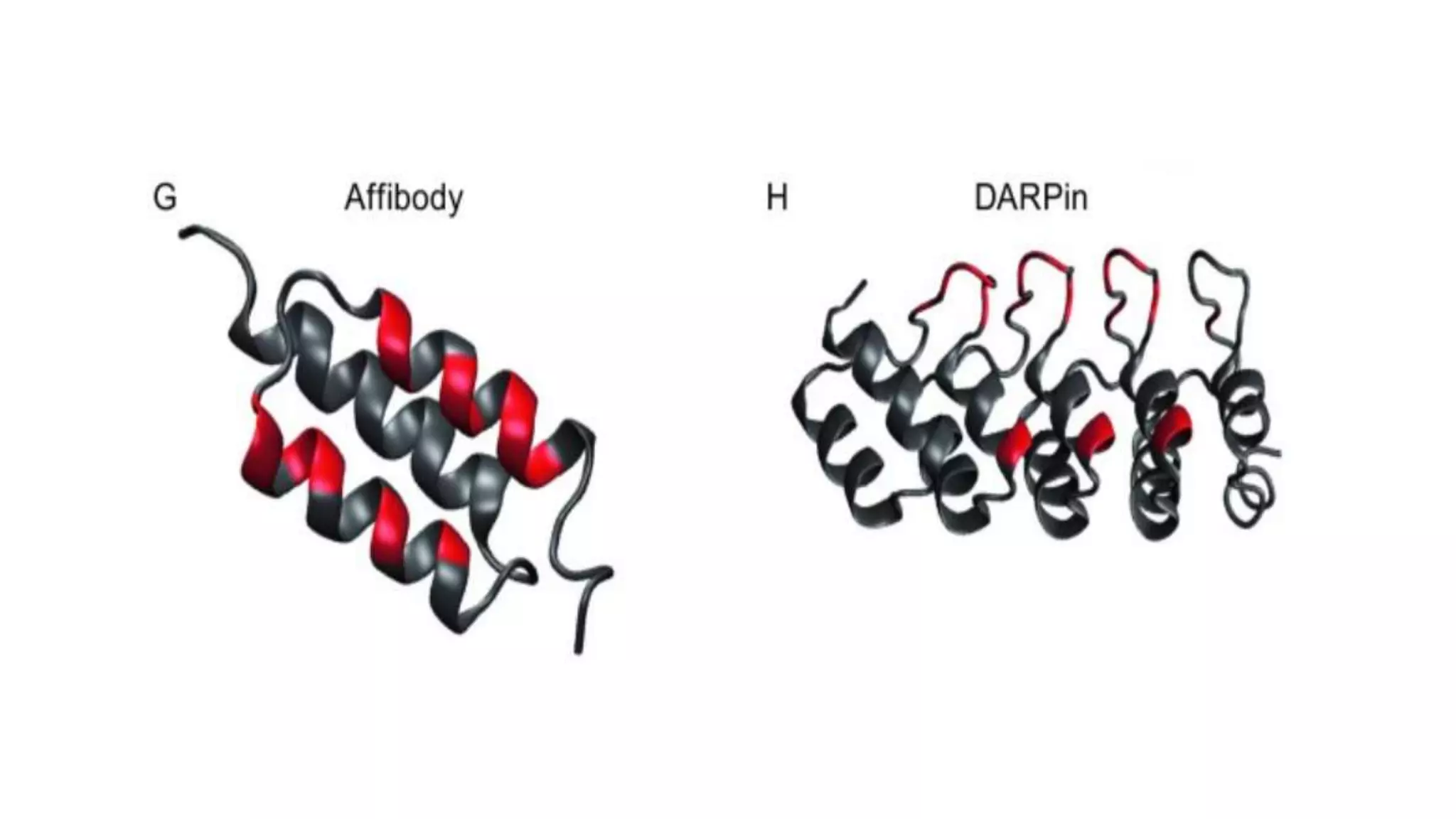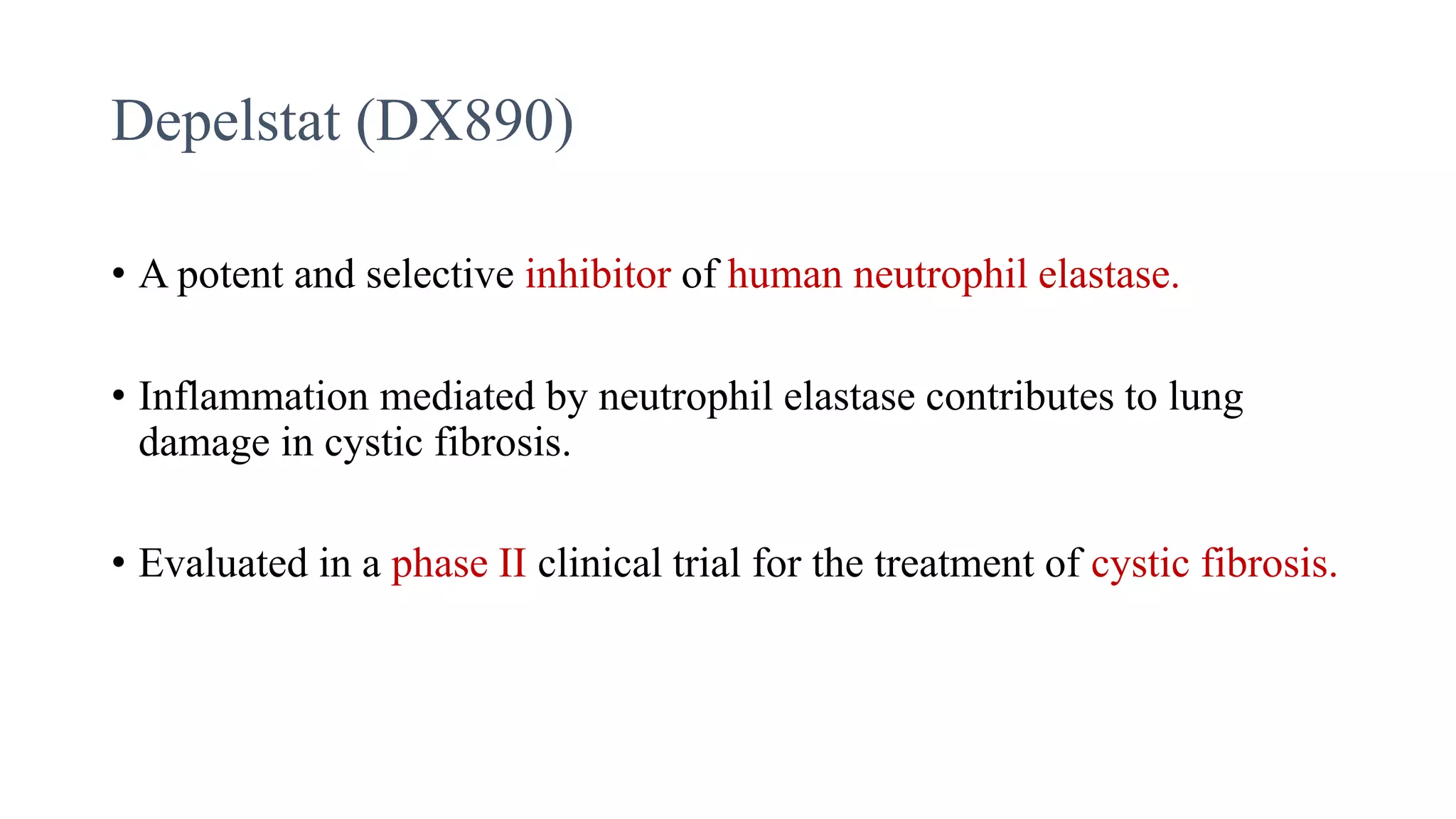The document discusses engineered protein scaffolds as next-generation therapeutics, addressing limitations of traditional antibodies and presenting various non-antibody proteins and fragments as alternatives. It outlines different categories of these scaffolds, their mechanisms of action, and applications in targeting specific diseases, including cancer and inflammatory conditions. Additionally, the text provides examples of various engineered proteins, their clinical trial status, and potential advantages over conventional treatments.























































![Affibody ABY-025
• Engineered to bind HER2.
• In a phase I/II clinical trial, 68Ga-gallium labelled ABY-025
([68Ga]ABY-025) was able to accurately quantify HER2-receptor
status in metastatic breast cancer via PET imaging.](https://image.slidesharecdn.com/engineeredscaffolfprotein-230102061310-4ba2779c/75/Engineered-scaffold-protein-56-2048.jpg)














